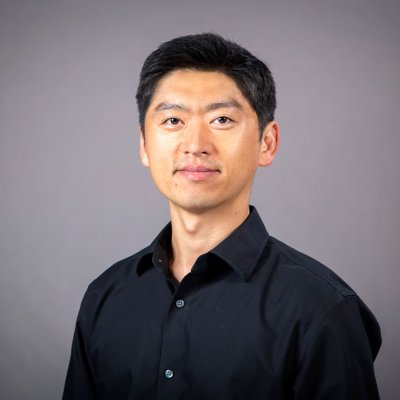ChangHwan Lee
Assistant Professor
Department of Biological Sciences
The RNA Institute

Education
PhD, Dartmouth College
About
Areas of Interest
- Stem Cell Biology
- Cell-to-Cell Signaling Pathways (e.g. Notch, TGF-ß, ERK)
- Regulation of Transcriptional Dynamics
- Human Disease modeling
- Environmental and Physiological Effects on Health and Disease
- Single-molecule Imaging and Analysis
- Computational Biology (Big Data Analysis and Machine Learning Based Image Analysis)
- Biostatistics
Research
The Lee Lab investigates fundamental controls of animal development and homeostasis. Our current research interest centers on the cell-to-cell signaling pathways, with a focus on their roles in stem cell regulation. We use the nematode Caenorhabditis elegans, a simple and powerful system for studying the signaling pathways in their native context. We employ a multidisciplinary approach, combining genetics, cell biology, computational biology, and biostatistics, to ask fundamental biological questions with a goal of applying the gained knowledge to the treatment for human disease.
Publications
- Lee, C., Shin, H., and Kimble, J. (2019). Dynamics of Notch-Dependent Transcriptional Bursting in Its Native Context. Developmental Cell 50, 426-435.e4.
- Crittenden, S., Lee, C., Mohanty, I., Battula, S., Knobel, K., and Kimble, J. (2019). Sexual dimorphism of niche architecture and regulation of the Caenorhabditis elegans germline stem cell pool. Mol. Biol. Cell 30, 1757–1769.
- Lee, C., Seidel, H., Lynch, T., Sorensen, E., Crittenden, S. and Kimble, J. (2017) Single-molecule RNA Fluorescence in situ Hybridization (smFISH) in C. elegans. Bio-protocol e2357
- Lee, C., Sorensen, E., Lynch, T. and Kimble, J. (2016). C. elegans GLP-1/Notch activates transcription in a probability gradient across the germline stem cell pool. eLIFE, 5:e18370
- Lee, C., Roberts, S. and Gladfelter, A. (2016). Quantitative spatial analysis of transcripts in multinucleate cells using single-molecule FISH. Methods 98, 124-133.
- Lee, C., Occhipinti, P. and Gladfelter, A. (2015). PolyQ-dependent RNA-protein assemblies control symmetry breaking. J. Cell. Biol. 208 (5), 533-544. (Featured at “JCB biobytes” podcast: http://jcb.rupress.org/site/biobytes/biobytes_mar_02_2015.mp3)
- Roper, M., Lee, C., Hickey, P. and Gladfelter, A. (2015). Life as a moving fluid: fate of cytoplasmic macromolecules in dynamic fungal syncytia. Curr. Opin. Microbiol. (Cover) 26, 116-122.
- Dasgupta, A., Hui-Chen, C., Lee, C., Gladfelter, A., Dunlap, J. and Loros, J. (2015) Biological Significance of Photoreceptor Photocycle Length: Role of VIVID Photocycle in Establishing a Dynamic VIVID-White Collar Complex Pool Essential in Photo-adaptation and Sensing Changes in Light Intensity. PLoS Genet.11 e1005215. doi: 10.1371/journal.pgen.1005215
- Anderson, C., Roberts, S., Zhang, H., Kelly, C., Kendall, A., Lee, C., Gerstenberger, J., Koenig, A., Kabeche, R. and Gladfelter, A. (2015). Ploidy variation in multinucleate cells changes under stress. Mol. Biol. Cell 26(6), 1129-1140.
- Lee, C., Zhang, H., Baker, A., Occhipinti, P., Borsuk, M. and Gladfelter, A. (2013). Protein aggregation behavior regulates cyclin transcript localization and cell-cycle control. Dev. Cell 25(6): 572-584. (Featured at “Cell PaperClips” podcast: http://www.sciencedirect.com/science/article/pii/S1534580713002815; and recommended by Faculty of 1000: http://f1000.com/prime/718020565)


